When it comes to frying ranges, buying British can have advantages that not only benefit your operations but also support local industries. We speak to leading operators to find out their reasons for buying British
British frying ranges, much like British manufacturing as a whole, boast a rich and storied history.
From the early days of bulky, labour-intensive coal-fired ranges with temperatures that were difficult to regulate, the market has evolved significantly to embrace more energy efficient, computer-controlled, gas frying ranges bespoke to each operator.
This shift has sadly, seen some British manufacturers disappear from the market, unable to innovate or keep up with the changing demands. However, others have evolved with the market and there remains a strong selection of trusted brands, such as Martyn Edwards Frank Ford, Mallinsons, Hopkins, and Henry Nuttall, continuing to lead the way in quality and performance.
Locally based
With British range manufacturers based locally, lead times on production can be quick and projects cost-effective. The latter is always top of mind when Alastair Horabin, owner of the 10-strong chain Seniors in Lancashire, purchases a new range. Since the first British range went in in 2000, Alastair has installed one into each shop he has opened, the most recent being just last year.
“If I’ve got £100,000 to spend, I want to get two ranges in two shops for that and British manufacturers can deliver on that,” he says.
“There are lots of people that have got frying ranges that are too good for their shops and that don’t make a profit,” he says. “For me, it’s about how much have I got? What do I think the shop can do? What I’m going to put in that fits the space? What fits the turnover that I’m going to deliver? For me, I’ve always looked at the headline cost of the frying range. And that’s it, it’s quite cold really.”
Likewise Paul Goodgame, managing director at The Chesterford Group, which owns Fish’n’Chick’n and Churchill’s also places an emphasis on budget. Having purchased around a dozen British ranges in his time, he comments: “A range can vary from £40,000 to £85,000 and some, so it’s a big difference. When you buy five of them in a year, that can soon rack up.”
The decision to buy British isn’t solely driven by cost, however. In most cases, when Paul installs a British range, it is because it ensures seamless integration into the broader project.
“What is attractive to me about buying from British manufacturers is they tend to be an all-in-one support for you,” he says. “So when we put a new range in a store, it is part of a refurbishment and we’ll be looking at air in ventilation, having a canopy built, those sorts of things. Those guys can do the whole turnkey for us, which means we can deal with just one company.”
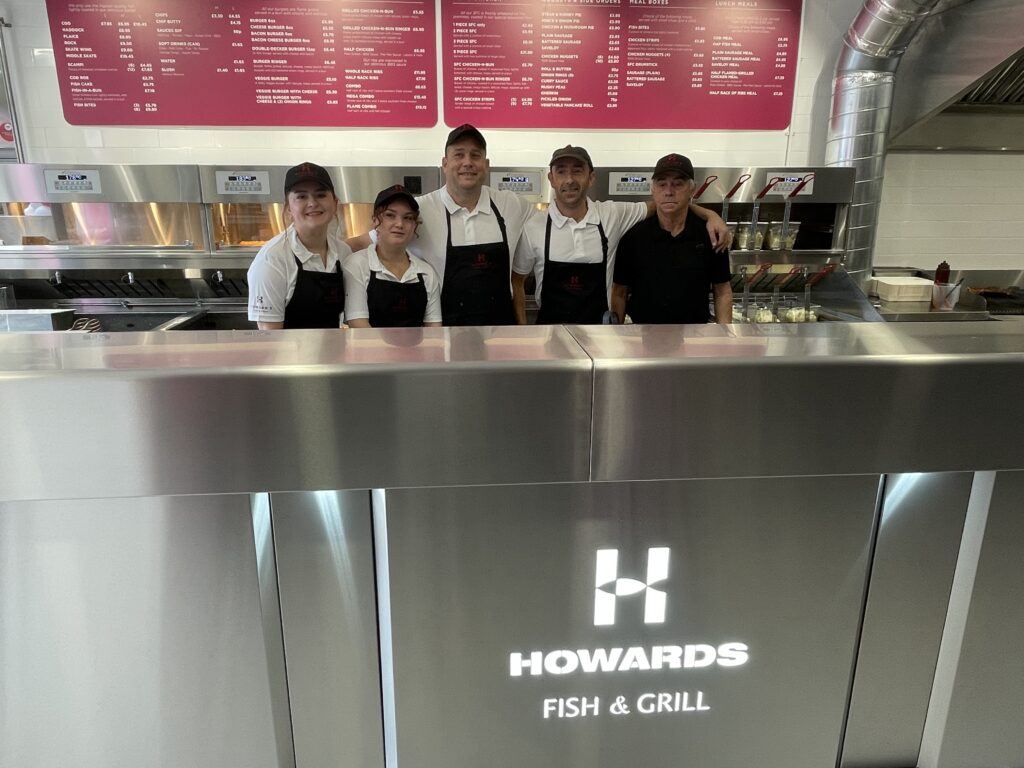
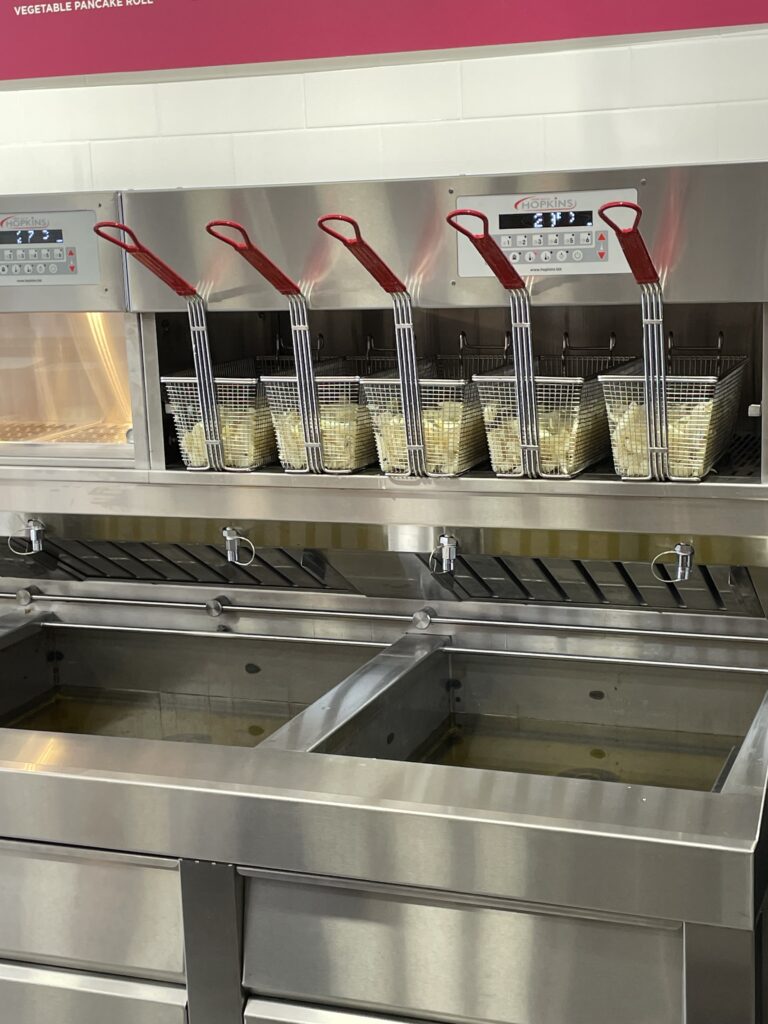
Technology and efficiency
There was a time when British manufacturers were seen as lagging behind in technology and efficiency, outpaced by their foreign counterparts. However, in recent years, they have made significant strides to close that gap, introducing high efficiency burners and digital controls that claim efficiencies of up to 94%, and built-in filtration, extending the lifespan of the frying medium.
Witnessing firsthand the advancements made by British manufacturers in recent years is Gary Howard. Gary owns two takeaways in Essex, both called Howard’s Fish & Grill – one in Benfleet, which opened seven years ago, and his latest branch 20 miles away in Shenfield where he installed a British-manufactured five-pan wall range. A relief manager for Fish’n’Chick’n for 25 years before buying his shop, Gary has worked on a variety of ranges and says: “The older British ranges were substandard before but they have really caught up,” he says. “They used to drop a lot more in temperature but this one I have in Shenfield keeps a good temperature, which helps produce a better product and also saves on gas.”
Another frier who has seen the improvement in British ranges is Dan Edwards, owner of Chips @No.8 in Prestwich, Manchester. Buying a two-pan British range five years ago to supplement an existing two-pan range, he admits energy efficiency wasn’t even on his mind. But with prices having rocketed recently, Dan upgraded to a three pan high efficiency range when he moved to bigger premises and opened a restaurant.
“We’re up 60% on the volume we were doing in the shop next door, I’ve got an extra pan and the gas bills are the same,” he says. “The amount of gas we’re using is identical, yet we’re doing 60% more volume. The recovery time is so much faster on the new range compared to the old one.
“The fact that we’ve got integrated filtration too now means that I can move oils from pan to pan with just a flick of a switch, rather than manually transferring it. It’s taken a lot of time out of my day. It’s a fantastic piece of kit. I absolutely love my range.”
Jemma Hennighan, manager of Hennighan’s Top Shop in Machynlleth, Powys, also fries on a British-manufactured range that her parents purchased eight years ago. Their positive experience with this equipment prompted them to invest in a second British-made range when they opened a second takeaway — Hennighan’s Bottom Shop — just 250 yards away in 2022.
Seven years apart, the two ranges reflect advancements not only in energy efficiency but also in oil usage, which has saved the business money as well as improved the shops’ operational sustainability.
“The filtration system is far greater on the new range,” Gemma explains. “There’s an oil drip draw from your chip box so it doesn’t even go down into your filter drawer, and that changes the whole element of your oil quality. I hadn’t dumped any oil or wasted any oil for six months at the Bottom Shop. That’s a huge selling point because we can’t afford to be dumping oil these days. We get very little money for oil waste, so the little oil waste that we do throw, it’s even better.”
It’s not just the performance of British frying ranges that is impressing today’s friers. Gary Howard is equally taken by the build quality and sleek, modern finish on his range as well as the ability to customise it, stating: “I’ve even got downlighters on the pans, which not only help me see what I’m frying but also give the range a contemporary look.”
Always opting for wall-mounted ranges, the lighting option also allows customers to watch the cooking process. “It’s nice for people to look down and see into the pans,” he adds, highlighting the visual appeal and transparency of the setup.

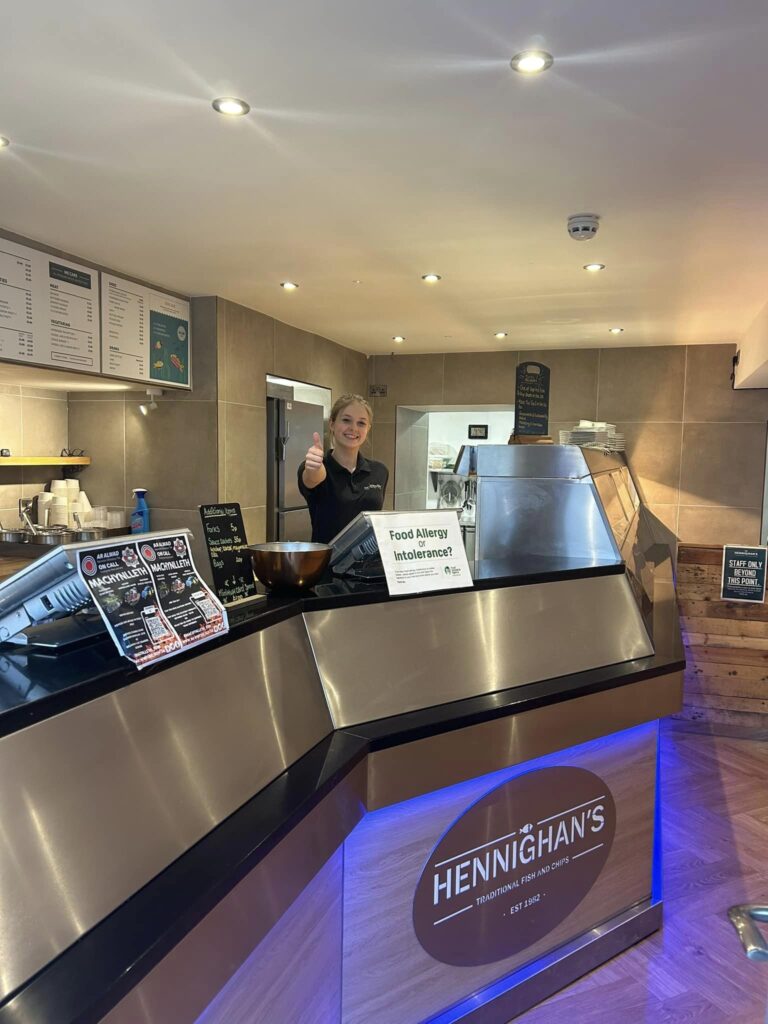
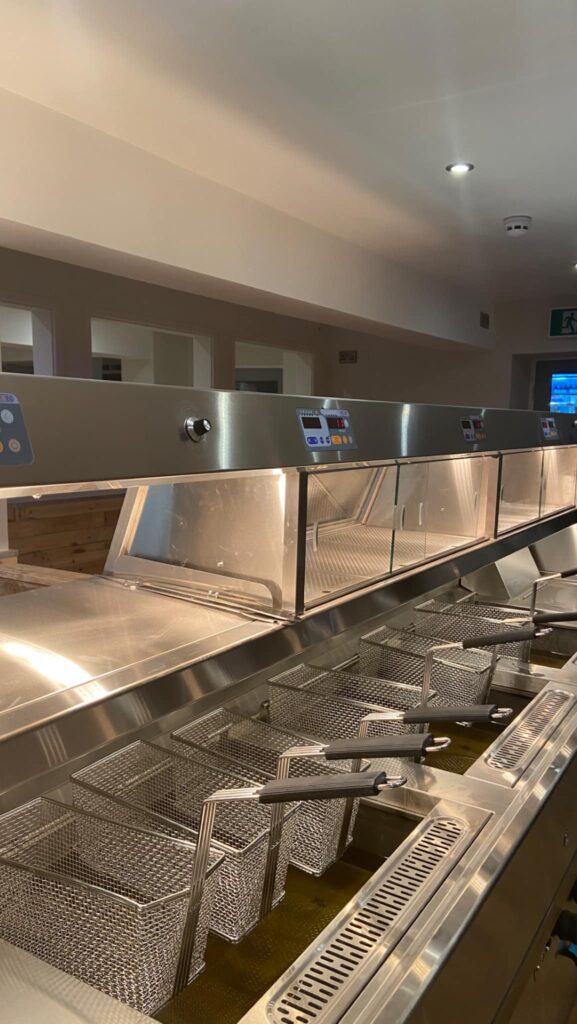
Replacements and repairs
Senior’s Alastair Horabin takes a slightly different approach to innovation, preferring the reliability and simplicity of the old British ranges over the desire for constant innovation. This, he says, reduces the cost of replacement parts or repairs.
“ I take all the digital elements out of all my frying ranges,” he says. “Even the one I put in a year ago has turn-thumb temperatures because I can fix them for £13. I’ve not even got high efficiency because I’ve learned that we need the ranges to make money. I compare it to trawling: we need the nets down. I don’t want the range down because I’m waiting for a controller that someone has to fit.”
The cost-effectiveness of repairs is a common theme among many friers’ experiences. Having parts readily available, for example, can significantly reduce downtime, ensuring businesses can get back up and running quickly. This combination of affordability and accessibility has become a crucial advantage for British-made frying equipment.
Paul Goodgame comments: “I’ve found the availability of parts to the fitters is very quick with British ranges. We don’t want to be closed and not trading. If we’ve got a pan that needs replacing, we want it done as soon as possible so we can carry on. If you’ve got to wait to get the parts, you’ve got a potential pan that’s down for periods of time, it’s going to affect your trade.”
Making the decision to buy British it not just an investment in high quality products, but also a show of support for local jobs and industries. Purchasing from British suppliers contributes to the country’s economy, helping small and medium-sized enterprises thrive and keeping manufacturing skills alive within the UK. This, in turn, strengthens local communities and boosts national economic growth.
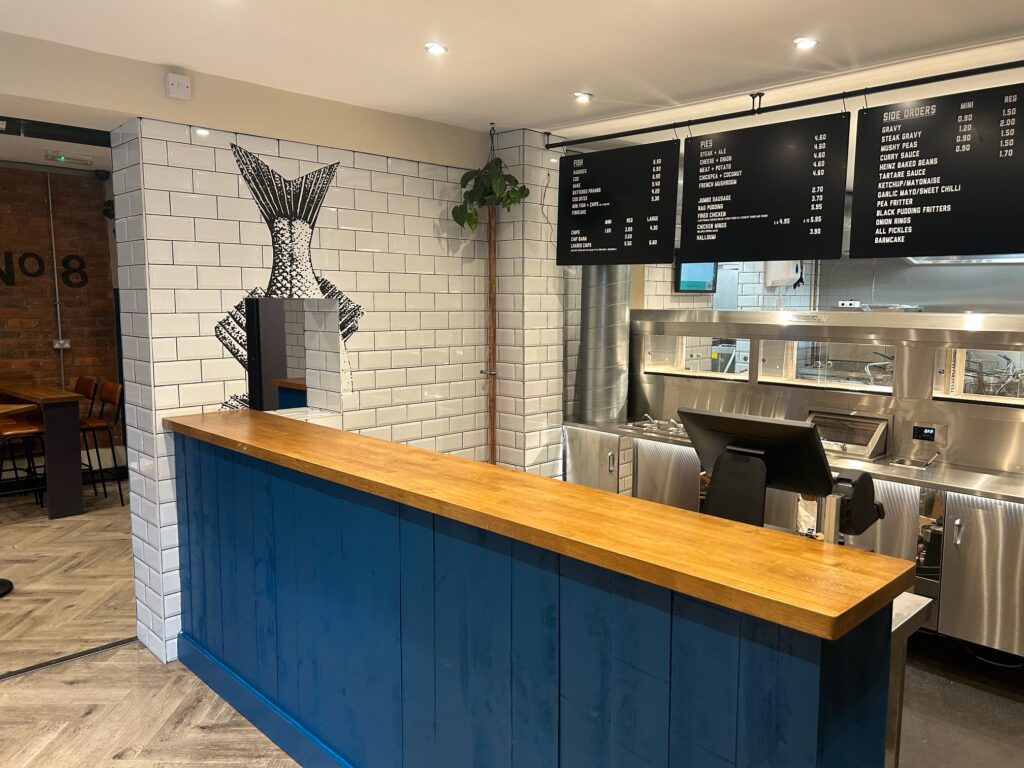
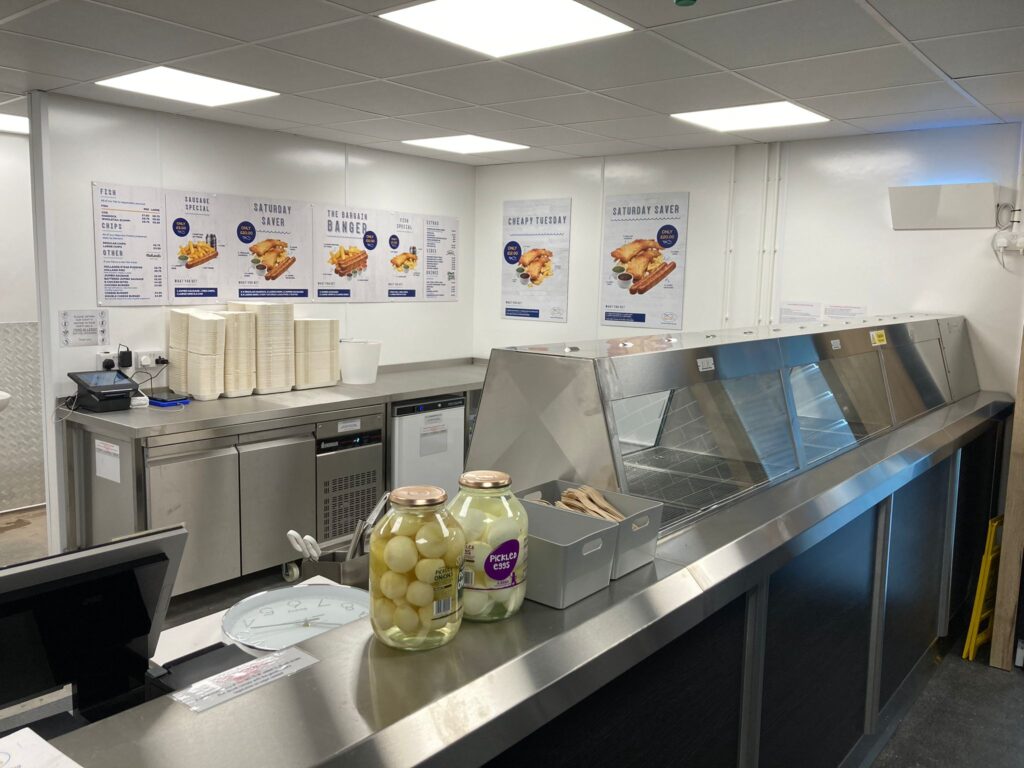
This was a factor for Chips @No 8’s Dan, whose business is based around buying British. “Everything we do is as local as possible and from independent and family-run businesses. That’s what we are, and we believe in supporting that. That’s why we only use British fish from British waters and why all our pies and sausages are locally produced. Buying British was the only option for us when it came to buying our frying range too. It’s about supporting the domestic market where we can.”
Whilst it wasn’t a factor in the buying process for Jemma Hennighan, buying British became a pull towards the end of the sale. She adds: “I feel that when people ask dad, particularly about ranges, the fact that he can say, ‘it’s British made’ is important. Unfortunately, in this country, we can’t often comment that something is made in Britain, so it has become a big factor that our range is made in Britain.”
Another advantage of buying British is having the manufacturer nearby, which provides a strong pull for aftercare. The close proximity offers peace of mind, as any issues can be addressed and resolved quickly, ensuring minimal disruption to operations. This accessibility adds an extra layer of confidence in maintaining the equipment as Alastair Horabin, explains: “Everyone has issues with equipment – fridge doors, fridge seals, ranges, pans, thermostats, cabinet lights. It can be non-stop when you’ve got 10 shops so being 35 miles away from my range supplier helps get us back on online.”
The right solution
Purchasing a frying range is a significant financial commitment – once it’s installed, it’s there for several years. Fortunately, there’s a wide variety of options available, and if buying British is important, the selection is even broader. Ultimately, it’s crucial to find the right solution tailored to your business needs to ensure long-term success and efficiency.
As Jemma Hennighan concludes: “My advice to anyone looking to change their range is do not rush and don’t go for a range just because someone else has one. Find what works for you and your business, because each business is different.”








